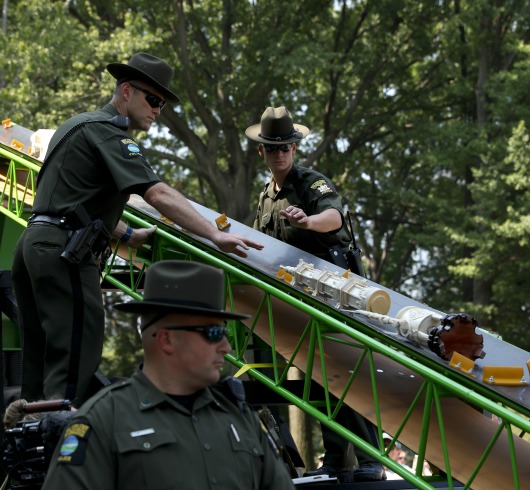Autumn is many people’s favorite season, but fall isn’t just all about picturesque pumpkin patches, apple cider and cozy sweaters — it’s also a time for rat infestations.
With the change in temperature comes an increase in vermin invasions, according to Orkin. The pest control company recently released a report detailing in which cities they do the most rodent treatments.
The report lists the “top 50 rattiest cities,” based on how many commercial and residential rodent treatments Orkin performed between Sept. 15, 2016 and Sept. 15, 2017.
Though many think of New York City when they first think of rats, it actually came in second on the list behind Chicago — which has topped the Orkin ranking for the last three years, according to the company.
Los Angeles, San Francisco and Washington followed behind New York City in that order, with Philadelphia landing in the sixth spot, up one spot from last year’s list. And though Boston has a neighborhood many call “Allston Rat City,” the Hub didn’t make the top 10, coming in at number 15 out of 50 cities.
Orkin entomologist Chelle Hartzer said in a video that though rats can be in every state, they tend to be more prevalent in bigger cities, because they have more people and “more people means more food source, and therefore more rodents.”
“We also see them a little bit more in port cities,” she added. “Ports have a lot of goods coming and going and have a lot of habitat for rodents to hide out at. But wherever you are, you have the potential to have some rodent issues.”
Each year, more than 20 million rodents invade homes across the country, according to the National Pest Management Association. Rats are particularly good at sneaking inside your home, experts say, because they can squeeze through a hole the size of a quarter or even chew their way inside.
To prevent rats from coming inside your home or business, Hartzer suggests making sure all food sources are cleaned up (even things like open pet and bird food can attract rodents), check your door and window seals for any openings to seal, especially now that the weather is changing, and if you do see any evidence of rodents, call a professional.
“Rodents can be active year round but we’re going to see more activity in the fall and the winter months when those temps start dropping on the outside,” Hartzer said. “Those rodents are going to look for something a little bit warmer, or an extra food source they may not have outside anymore because of those cooler temperatures.”
New York City Mayor Bill de Blasio announced at the end of September that he would dedicate $750,000 to tackle rat “hot spots” on the Upper West Side, an effort to reduce rat activity in playgrounds, parks and schools. Some steps toward that goal include implementing new waste containers, increasing baiting efforts, adding more pest-control staff and ramping up enforcement of rat-related violations, like when residents and vendors litter or feed pigeons, which helps grow the rat population. This is on top of a $32 million plan to reduce the city’s rat population that was announced in July.
Back in January, a report named Philadelphia the top metro area in terms of the most mice and rats sightings in housing units. Just under 19 percent of Philadelphia-area households reported rodent sightings in the Census Bureau’s American Housing Survey, according to Governing magazine.
Philadelphia Department of Public Health spokesperson James Garrow said that the department can’t really validate Orkin reports as they’re based on internal information, but that it’s important to remember that all cities have rodents.
“It’s a function of having people, trash, and lots of places to hide,” he said. “Everyone has a role in keeping rats out of their home or business, and our recommendations are simple: keep food in sealed containers, bag your garbage and put it in sealed metal trash cans, pick up dog feces, and block basement openings so they can’t get in. We investigate complaints to our rat hotline (215-685-9000) and will work to eliminate the rats if they are found.
In the Governing magazine report, Boston came in second for home rodent sightings with 16.9 percent of households reporting seeing a rat or mouse, but William “Buddy” Christopher, commissioner for the city’s Inspectional Services, doesn’t think that Boston’s rat population has really grown in the last four or five years. Still, Boston’s old infrastructure contributes to the problem.
“If you look at that [Orkin] list, you see that the oldest cities are the ones that seem to have the biggest problems,” he said. “We have a lot of sewer lines and water lines that are abandoned but still buried, and they’re a conduit for travel.”
The rat problem is also something that’s in all Boston neighborhoods, he said, but the city has education initaitives that make sure people are handling their trash correctly and filling any spaces in building foundations or between sidewalks and buildings.
“This is an ongoing battle,” Christopher said. “We’re trying to contain it so we minimize it, because there’s a real gross factor with rats. Everybody cringes.”























